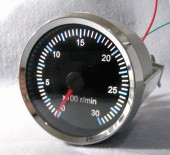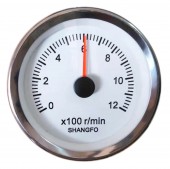| Guidance 指路人 g.yi.org |
Software / Reginald / Examples / subclass.rex |
|
/* An example of FUNCDEF'ing various Windows OS functions * to subclass a REXX Dialog window. What is subclassing? * * There are certain features that REXX Dialog supports * in its windows. For example, it supports notifying you * when the user clicks upon one of the controls in the * window. It also notifies you when a menu item is selected. * It can notify you when a time-out occurs. Etc. * * In order to do what it does, REXX Dialog implements a * "Window procedure" inside of its DLL. This handles all of the * "messages" that the operating system sends as a result of * anything that happens to that window. REXX Dialog handles * all of these messages upon your script's behalf, and * reports only a small, useful subset of events whenever you * call RXMSG(). This alleviates you of a lot of work. * * But there are other things that REXX Dialog does not directly * support, such as notifying you of a change in the mouse * (pointer) position. Nor does REXX dialog support drawing * graphics primitives in a window. * * When you subclass a window, what you do is create your own * window procedure (ie, a subroutine in your script) that the * operating system will call whenever anything happens to this * window. It will call your own subroutine (instead of REXX * Dialog's internal Window procedure, even though REXX Dialog * still creates the window). The operating system will pass you * arguments that let you determine what event happened in that * window, and you can implement some instructions to do something * useful. For example, when receiving a WM_PAINT message, you can * draw your own text (in various fonts and colors) or graphics * primitives. When receiving a WM_MOUSEMOVE, you can determine * the new position of the mouse pointer, and even change its * shape (ie, image). You can pretty well do anything you want * with the window. * * And for messages where you just want REXX Dialog to do its * normal stuff, your subroutine calls REXX Dialog's internal * window procedure, passing those same arguments it received * from the OS. REXX Dialog will do what it normally does in * that case. * * This is what subclassing is -- intercepting a window's messages * (sent from the operating system) by installing your own window * procedure ahead of the window procedure of the entity that * created the window. * * Of course, there is a Windows operating system function to * subclass a window. It lets you tell which window you wish to * subclass, and what subroutine in your script you want to be * called whenever an event happens with that window. And this * OS function gives you the address of the original window * procedure so that you can call it when you want the default * handling. * * If you have several windows that all should respond to the * same messages in the same way, you can use one subroutine to * service them all. * * A drawback: Doing a lot of stuff in an interpreted language * like REXX from a window procedure could slow down your GUI. * Also, handling SYNTAX or HALT condition can be tricky. * But keeping it relatively simple should be ok. * * In this example, we'll let REXX Dialog create a simple window, * and we'll subclass it to detect when the mouse moves, and * print our own colored text to the window (instead of using * a REXX Dialog Text control). * * NOTE: Assumes REXX Dialog is autoloaded. */ /* Note: Since we're using Reginald exclusively, we'll also use * ADDRESS NULL so that we can eliminate the need for the CALL * keyword. */ ADDRESS null NUMERIC DIGITS 10 /* ============== FUNCDEF some needed OS functions ============ */ /* Make things easy for us with WINFUNC option */ OPTIONS "WINFUNC NOSOURCE" /* Trap ERROR, and ask REXX Dialog for ERROR raising */ SIGNAL ON ERROR RXERR('ERROR') /* Register the Windows OS function SetWindowLong(), callable * as SetWindowProc(). Define it to easily subclass a window * with our own Window procedure in REXX. We also need a * Definition string for our subroutine. We'll define it as * having a function type of WINDOWPROC. All Window procedures * have this same Definition string. We'll also specify * SetWindowProc as returning a func WINDOWPROC. This will be * the original window procedure. Now whatever variable we store * the return value in, that is also the function name we use to * call the original window procedure. */ windowproc = "void, void, 32u, void, void" /* Definition string for a Window procedure */ FUNCDEF("SetWindowProc", "func WINDOWPROC, void, 32, func WINDOWPROC", "user32", "SetWindowLong") /* Register the Windows OS function SetWindowLong() again, this * time callable as UnsetWindowProc(). Define it to easily reset * the original window procedure which we stored in some REXX * variable. */ FUNCDEF("UnsetWindowProc", ", void, 32, void", "user32", "SetWindowLong") /* ================== Create a REXX Dialog window ===================== */ /* First Group will be a text group with a groupbox. We'll use two of * the text controls to display the current mouse X and Y positions */ rxtype.1 = 'TEXT' rxflags.1 = 'NOBORDER' rxlabel.1 = 'X =||Y =||Mouse Position' /* NOTE: 2 ControlsPerLine */ rxpos.1 = '2 10 20 50' rx = '' RXCREATE('RX', 1, 'Main Window', 'MIN') /* ==================== Subclass the window ================== */ /* Now that the window is open, we can set "MyWindowProc" as the * subroutine to call for this window, and save the original Window * procedure (ie, REXX Dialog's internal procedure) in a variable * called OrigFunc so that we can call it when we want (using the * name "OrigFunc"). We do this once before our RXMSG() loop. * * The first arg is the window handle (gotten from some OS * function such as FindWindow, or if a REXX Dialog window, * it can be gotten via RXQUERY's "HANDLE" operation). * * The second arg tells which value (of the window) you wish * to set. It must be one of the following: * * -4 = Set the window's Window Procedure. * -6 = Set the window's Instance handle. * -8 = Set the handle of this window's parent window. * -12 = Set the window's ID (number). * -16 = Set the window style bits. * -20 = Set the window extra style bits. * -21 = Set some application specific data associated with the window. * * The third arg is the name of our subroutine for the window procedure. */ err = RXQUERY(, 'HANDLE', 'WindowHandle') IF err == "" THEN DO origfunc = setwindowproc(windowhandle, -4, mywindowproc) IF origfunc == 0 THEN DO RXSAY("Error setting window procedure!") RETURN END END ELSE DO RXSAY("Can't get window handle!") RETURN END /* ===================== Do user interaction ==================== */ DO FOREVER /* NOTE: While we're inside this call to RXMSG(), and some event * happens with the above window, then our MyWindowProcess * function gets called. */ RXMSG() /* Did user click on the CLOSE BOX? */ IF rxid == '' THEN SIGNAL HALT END /* ============== Window Procedure written in REXX ============== * There are 4 args passed to this procedure. The first arg is the * handle of the window for which this message is applicable. For * a REXX Dialog window, it would be the same handle we got from * the RXQUERY "HANDLE" operation. * * The second arg is a number that tells us what kind of message * this is. For example, a WM_MOUSEMOVE message has a numeric * value of 512. A WM_CTLCOLORSTATIC has a value of 312. A * WM_PAINT is 15. Etc. * * The third and fourth args can be various things depending upon * what message is. For example, the third arg for WM_PAINT is a * device context handle (used with BeginPaint) and the fourth * arg is nothing. But, the third arg for a WM_MOUSEMOVE is a * numeric value that tells which keys (ie, CTRL, SHIFT) were * held down when the mouse was moved, and the fourth arg is the * mouse x and y position (in screen units) or'd together. So, * you may have to do different things with the third and fourth * args, or even sometimes use CONVERTDATA to convert data formats * between your REXX variables and some C structure. * * NOTE: It's very important that we trap SYNTAX or HALT here, * and do the default processing. Otherwise, if our script were * to be aborted here without doing that default processing, our * REXX Dialog window could be left hanging around, and we'd have * to use Windows Task Manager to stop the task. */ mywindowproc: SIGNAL ON SYNTAX NAME mywindowerror SIGNAL ON HALT NAME mywindowerror message = ARG(2) SELECT /* Is it a WM_MOUSEMOVE? */ WHEN message == '512' THEN DO /* Let's store the new Mouse X and Y positions. One * tricky thing to remember is that if you use the * PROCEDURE keyword on MyWindowProc, but you want * these variables to be saved across calls to * MyWindowProc, then you would have to EXPOSE the * these variables. Otherwise, those variables would * disappear each time MyWindowProc RETURN'ed. * But we're not using PROCEDURE here. */ /* We have to break up the X and Y values from * the one ARG(4). Essentially we're doing to X * what the C macro LOWORD() does, and to Y we're * doing HIWORD() */ x = C2D(BITAND(D2C(ARG(4), 4), '0000FFFF'x, ' ')) y = X2D(LEFT(D2X(ARG(4), 8), 4)) /* Display the X and Y positions in our TEXT group */ RXSET(, "VALUE", x, 1, 2) RXSET(, "VALUE", y, 1, 4) END /* For all other messages, we have no processing */ OTHERWISE NOP END mywindowerror2: /* For default handling, we need to call the original * window procedure, and return its return value. */ RETURN origfunc(ARG(1), message, ARG(3), ARG(4)) mywindowerror: CONDITION('M') SIGNAL mywindowerror2 /* ======================= Error Handling ======================= */ syntax: error: /* NOTE: CONDITION('D') fetches error message. CONDITION('E') fetches the * error number. SIGL is the line number where the error occurred. */ CONDITION('M') halt: /* If we subclassed the window, restore its original procedure. */ IF SYMBOL(origfunc) == "VAR" THEN unsetwindowproc(windowhandle, -4, origfunc) RXMSG(,'END') RETURN |
|
| © Mon 2025-6-30
Guidance Laboratory Inc. Email:webmaster1  g.yi.org Hits:0 Last modified:2013-06-18 23:35:23 g.yi.org Hits:0 Last modified:2013-06-18 23:35:23
|
 |
|||
|
|
 搜索
搜索 论坛
论坛 Home
Home 回顶部
回顶部







